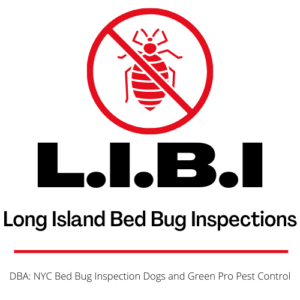When you find evidence of bed bugs in your home or office, your first instinct is to get rid of them as quickly and efficiently as possible. That’s the natural response, and one that will be shared by just about everyone who has ever dealt with a bed bug infestation.
However, before you can effectively fight a bed bug invasion you need to know a little more about the enemy. Having a better understanding of the life cycle of the bed bug will help you determine how bad the infestation has become, and just what treatments your exterminator will need to deploy to eradicate these blood sucking parasites once and for all.
So, let’s take a look at the life cycle of the bed bug, their breeding rates, and their feeding habits.
Breaking Down the Bed Bug Life Cycle
Bed Bugs pass through seven stages from birth to adulthood. In order to determine the level of infestation it is important to understand a little bit about each stage of the bed bug’s life cycle.
- Eggs – Bed bugs begin their life as eggs. These are typically about one millimeter in length, and have a milky white color to their shell. Roughly the size of a couple of grains of salt, bed bug eggs can be extremely difficult to see with the naked eye.
- 1st State Nymphs – After hatching from their eggs bed bugs pass through 5 stages of growth on their way to adulthood. Immature bed bugs are called nymphs, and throughout this portion of their development they’re primarily concerned with one thing and one thing only – feeding. First stage nymphs are roughly 1.5 millimeters in length, with translucent bodies that will darken as they grow older.
- 2nd Stage Nymphs – After its first molting the bed bug will become a second stage nymph. Their size will increase to about 2 millimeters and they will ramp up their feeding patterns to further their growth and development.
- 3rd Stage Nymphs – The bed bug molts, shedding its outer ‘skin’, through each transition to its next stage. Third stage nymphs are approximately 2.5 millimeters long. At this point they will be easier to see with the naked eye, and you may notice the remnants of shedding in bedding and along baseboards.
- 4th Stage Nymphs – Bed bugs must feed on blood in order to grow and pass into their next stage of development. Fourth stage nymphs can get as a large as 3 millimeters in length.
- 5th Stage Nymphs – This is the final nymph stage, and at this point the bed bug can grow to between 4 and 5 millimeters. 5th stage nymphs are easier to spot with the naked eye as their bodies will have become darker and their blood sacks will be more evident.
- Adult – It takes roughly five weeks for a bed bug to reach adulthood. Once they have passed through all 5 nymphs stages they will be ready to breed. The lifespan of an adult bed bug is typically about five to six months. However, it is not unheard of for bed bugs to live as much as a full year in food rich environment.
Breeding Patterns of the Bed Bug
Female bed bugs typically lay between 1 to 5 eggs a day. It takes roughly two weeks for an egg to hatch, and as soon as the 1st stage nymph emerges from its egg it will find a host and begin to feed. It takes about five weeks for a first stage nymph to reach adulthood, at which point the breeding cycle will start. So, as you can see, it doesn’t take long for a few wayward bed bugs to turn into a full scale infestation. Within as little as six months you could find yourself moving from a small bed bug problem to a huge nightmare for you and your family.
Feeding Patterns of the Bed Bug
As a general rule, an adult bed bug only needs to feed about once a week. That being said, it is possible for adult bed bugs to go longer periods of time without a meal. While there is a persistent myth that bed bugs can go a year or more without feeding, the truth is somewhat less startling. An adult bed bug, if necessary, can go as long as two months without eating. But this is fairly rare among standard populations.
When a bed bug bites its host the feeding cycle can last between five and ten minutes. But because bed bugs are such small parasites it’s not unusual for the feeding cycle to go unnoticed by the host. The first sign that you have been bitten by a bed bug is usually the tell-tale red bumps, or rash, that can be produced by the insect’s bite. These bumps or rashes can be itchy, but in most cases present no serious health risks to the host. Still, the appearance of bed bug bites should not be ignored and immediate steps should be taken to eliminate any possible infestation.
Ridding Your Home or Office of Bed Bugs
As you can see it doesn’t take long for a few stray bed bugs to turn into a full scale invasion force. These parasites can easily find their way into your home or office, hitching a ride on a coat or pant leg or attaching themselves to luggage or book bags. Once inside the females will start to lay their eggs and the bed bug cycle of life with begin anew. With fresh generations being born ever couple of months it’s all too easy for a small problem to become a huge nightmare in no time at all.
Published by Scott Palatnik
If you believe you’ve brought bed bugs into your home or office, give us a call, we can help!
Now with 2 locations. On Long Island @ 516-619-6149, or in NYC @ 212-299-9186
We are Long Island Bedbug Inspections.
Your Bedbug Inspection, and Elimination solution.


